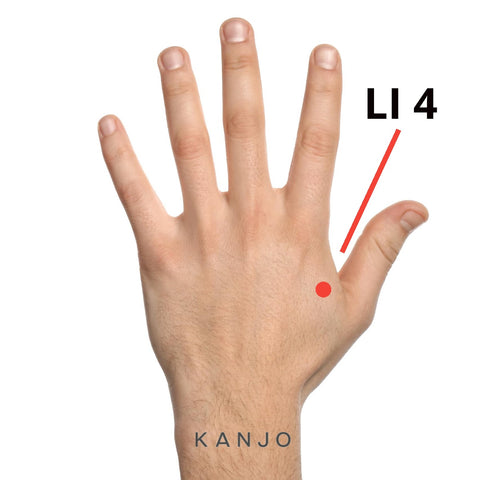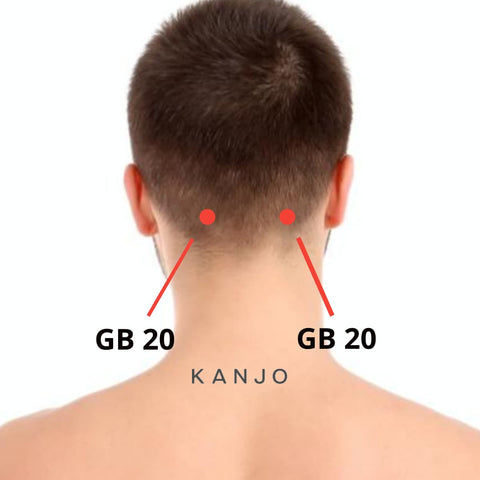Are you looking for ways to make yourself feel better? Do you want to learn how to massage pressure points for pain relief?
There are many benefits to acupressure and learning how to massage pressure points. For example, you can relieve stress, reduce anxiety, increase energy levels, and even help with insomnia.
This article covers the basics of everything you need to know to get started with acupressure and how it can offer you relief for various ailments.

Getting Started With Acupressure
Acupressure is rooted in Traditional Chinese Medicine (TCM) and has been used for over 2,000 years to treat a variety of conditions. In TCM, there are meridians (pressure points) that run through the body along pathways that correspond to organs and glands located throughout the body.
When these channels become blocked or obstructed, they cause symptoms such as headaches, backaches, migraines, and other ailments. By stimulating pressure points on the body, we can clear blockages from our bodies’ channels and restore balance.
Massaging pressure points has proven health benefits. It helps release endorphins, which are your body's natural painkillers and helps make you happier and calmer.
Acupressure also reduces muscle tension, which can help prevent injuries. And it increases blood flow, which improves circulation and boosts your metabolism.
Massaging pressure points is simple, safe, and effective. There are still some things to keep in mind when performing acupressure to get the most out of it.
- Set aside 10-15 minutes for acupressure, much like you would for meditation.
- Find a comfortable place to sit or lie down.
- Relax and breathe deeply during acupressure.
- Use firm pressure and use small, circular motions when massaging.
Acupressure Precautions
Before starting acupressure, it's important to be aware of some precautions. These are similar to deep tissue massage precautions. Acupressure should be avoided:
- If you are pregnant. Acupressure may induce contractions.
- If you have cancer or a cancerous tumor.
- If you have an injury that is more painful when stimulating a pressure point.
- If you have varicose veins (visible, swollen bluish veins under the skin)
If you have any medical conditions, it's always best to consult with your doctor before beginning.
For Shoulder Pain and Neck Pain
Shoulder and neck pain are two of the most common problems that acupressure is used for. They often occur due to repetitive movements or poor posture.
There are several pressure points to help relieve shoulder and neck pain. Two of the easiest ones to access are located on the back of the hands:
Large Intestine 4 (LI 4) - Located in the crease between the thumb and index finger.

Triple Energizer 3 (TE 3) - Located in the groove between the fourth and pinky fingers.

When you find the pressure points:
- Apply firm pressure to the points.
- Hold for 5 to 10 seconds.
- Repeat 4 to 5 more times on each hand.
For all the pressure points for shoulder and neck pain, read these in-depth pain relief guides:
For Upper and Lower Back Pain
Pain in the upper back and lower back can be caused by many different factors, including poor posture and sitting too long.
When your upper back pain occurs due to tight muscles, you can apply pressure to the LI 4 and TE 3 pressure points mentioned for shoulder and neck pain.
For lower back pain and muscle stiffness, there are two key pressure points in the lower back to massage:
Bladder 23 (B 23, Kidney Shu) - These points are found on the lower back at the same height as your belly button. The two points are two finger widths from the spine on the right and left sides.

Bladder 47 (B 47, Will's Chamber) - These two points are found next to the B 23 pressure points. The B 47 points are four finger widths from the spine on either side.
To apply pressure to the lower back acupressure points, I find this to be the easiest way to apply steady pressure:
- Stand up and use your knuckles on the pressure points.
- Apply steady pressure and slowly move in a circular motion for 10 seconds.
- Repeat 4 to 5 more times on both sides.
For more on back pain relief, see the in-depth guides:
For Migraines and Headaches
There are a number of different types of headaches, with migraines and tension headaches being the most common.
You can get quick relief by using acupressure on these pressure points:
Bright Light (B 2) - These two points are found on the bridge of your notes at the end of your eyebrows. Use your two index fingers at the same time to apply pressure.

The Third Eye (GV 24.5) - This point is found between your two eyebrows in the middle of your forehead.

The Gates of Consciousness (GB 20) - These two points are located towards the top of your neck and base of the skull.

Learn more in the in-depth guide to Pressure Points for Migraines and Headaches.
For Nausea
Nausea is one of those things that can happen without warning. It’s not always easy to predict when it will strike, but when it does, you can use these pressure points for relief.
Pericardium 6 (PC 6 or P 6, Neiguan) - These points are located on both wrists. With your palm facing you, place your three middle fingers across the wrist to measure three finger widths. Use your thumb to find two large tendons. That is where the pressure point is.

LI 4 - The same point from above for neck and shoulder pain that's located between your thumb and first finger.

For Digestive Problems
If you have digestive problems such as bloating, gas, and stomach pain, you may want to try acupressure. These pressure points can help influence and stimulate abdominal organs for digestion and gastrointestinal disorders:
Stomach 36 (ST 36, Zusanli or Three Mile Point) - These two points are located three inches (or four finger widths) below the kneecap and one inch to the outside of both knees. It's to the outside of the shinbone.

Conception Vessel 12 (CV 12, Zhongwan) - This pressure point is found 4 inches above the navel. Be careful not to apply too much pressure on this point as it can be more sensitive.

Bladder 21 (B 21, Weishu) - These two pressure points are located 6 inches above the small of your back and 1.5 inches away from the spine on either side.

For Knee Pain
Knee pain is often caused by arthritis, bursitis, or other conditions. If you experience knee pain, here are a few of the key pressure points to relieve it through acupressure:
Stomach 35 (ST 35, Calf's Nose) - These pressure points are just below the kneecap and on the outside indentation on both knees.

Stomach 36 (ST 36, Zusanli or Three Mile Point) - The same point as above for digestive problems, located four finger widths below the kneecap and an inch to the outside.

Bladder 54 (B 54, Commanding Middle) - These points are found behind the knees in the center of the crease.

Learn more in the in-depth guide to Pressure Points for Knee Pains.
For Menstrual Pain
Menstrual cramps can be painful, especially during the period. Here are some ways to ease menstrual discomfort with acupressure:
Spleen 6 (SP 6, Sanyinjiao) - Located on the inside of your feet, measure four finger widths above your ankle to find the pressure points. Stimulating this point will release hormones to help relieve menstrual cramps.

Shen Men - Located near the top of both ears on the inside, they are triangular-shaped spots. Pressure at these points will help with cramping pain, as well as anxiety experienced during menopause and PMS.

Pericardium 6 (PC 6 or P 6, Neiguan) - These two points mentioned above for nausea will also be helpful for nausea and vomiting symptoms during the menstrual cycle. These points are found on both wrists, three finger widths from the base of your palm.

Massage Pressure Points Final Thoughts
Acupressure therapy and massaging pressure points have been around since ancient times and continue to grow in popularity today. Acupressure can be done anywhere, anytime, and are easy to learn.
Acupressure can be used to help relieve many different types of ailments, including headaches, muscle soreness, stress relief, and even menstrual cramps.
Massage Pressure Points FAQs
How do you release pressure points?
Releasing pressure points involves pressing firmly and slowly massaging in a circular motion. That will help to relax the muscles and reduce tension. You should start to see reduced symptoms soon after depending on the original problem.
Can you massage trigger points too much?
Massaging trigger points a few times throughout the day is fine, but you should stop if it's causing more pain. If applying pressure on the trigger points is causing more pain, consult with a doctor in case there are other underlying issues.
How to massage feet pressure points?
Massaging pressure points on your feet is easiest while sitting in a comfortable chair. Bring a foot up to rest on your opposite knee and use your thumbs to apply pressure to feet pressure points. Instead of using your thumbs, you can also use Kanjo Foot Pain Relief Balls or the Kanjo Foot Pain Relief Multi-Roller.

Sources:
- Harvard Health: https://www.health.harvard.edu/mind-and-mood/endorphins-the-brains-natural-pain-reliever
- WebMD: https://www.webmd.com/balance/guide/acupressure-points-and-massage-treatment
- Healthline: https://www.healthline.com/health/pain-relief/how-to-massage-your-pressure-points
